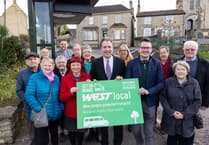Bath’s Park & Ride schemes have been given an official thumbs up after ranking in the top two services in a national independent survey which analysed results from 111 authorities.
The quick and easy service has been ranked second in the country for satisfaction in the National Highways and Transport Network Satisfaction Survey, the largest survey of local opinion around transport and highways in the UK.
There were 404,000 surveys issued, with randomly selected residents from each participating authority receiving a survey in the post. In Bath & North East Somerset 900 residents responded.
Bath has three Park & Ride sites, Lansdown, Newbridge and Odd Down, each offering services every 15 minutes throughout the day directly into the city centre. They have a combined total of 2,806 car parking spaces, which are free for those using the service.
Currently a return fare costs £3.60 for adults, with numerous discounts like group tickets and free journeys for children under 16 years old when accompanying a paying adult.
Bath’s three Park & Ride sites reduce congestion during key events, like the recent Bath Christmas Market, which attracts hundreds of thousands of visitors into the city. They also help with ongoing efforts by the council, like the recently introduced emission-based parking charges, to improve air quality in the city by reducing the number of incoming private vehicles.
Councillor Manda Rigby, cabinet Member for Transport, said: “This result is really positive to see, achieving the second highest satisfaction score is a fantastic achievement and I’d like to thank all the residents that took the time to complete the survey, your feedback is very much appreciated.
“Our Park & Ride services are a quick, affordable, easy way into the city and they help to improve air quality and reduce congestion. This is especially important during events which bring a surge of visitors to the city.”
Air quality in Bath is continuing to improve, the 2022 Annual CAZ Report published by Bath & North East Somerset Council notes that compared with 2019, there has been a 26% reduction in annual mean nitrogen dioxide (NO2) within the zone, representing an average reduction of 8.5 micrograms per cubic metre (μg/m3).




